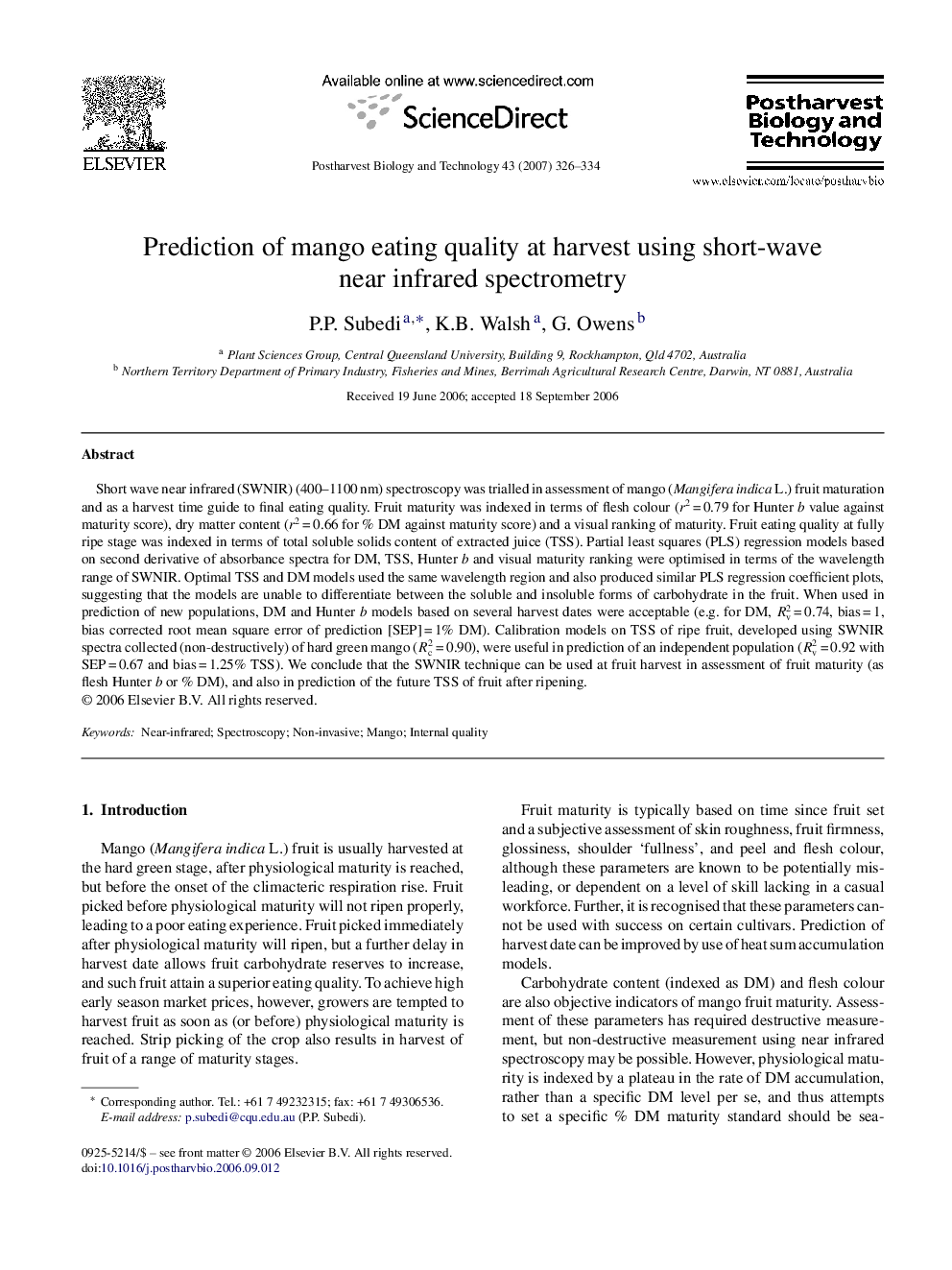| Article ID | Journal | Published Year | Pages | File Type |
|---|---|---|---|---|
| 4519804 | Postharvest Biology and Technology | 2007 | 9 Pages |
Short wave near infrared (SWNIR) (400–1100 nm) spectroscopy was trialled in assessment of mango (Mangifera indica L.) fruit maturation and as a harvest time guide to final eating quality. Fruit maturity was indexed in terms of flesh colour (r2 = 0.79 for Hunter b value against maturity score), dry matter content (r2 = 0.66 for % DM against maturity score) and a visual ranking of maturity. Fruit eating quality at fully ripe stage was indexed in terms of total soluble solids content of extracted juice (TSS). Partial least squares (PLS) regression models based on second derivative of absorbance spectra for DM, TSS, Hunter b and visual maturity ranking were optimised in terms of the wavelength range of SWNIR. Optimal TSS and DM models used the same wavelength region and also produced similar PLS regression coefficient plots, suggesting that the models are unable to differentiate between the soluble and insoluble forms of carbohydrate in the fruit. When used in prediction of new populations, DM and Hunter b models based on several harvest dates were acceptable (e.g. for DM, Rv2 = 0.74, bias = 1, bias corrected root mean square error of prediction [SEP] = 1% DM). Calibration models on TSS of ripe fruit, developed using SWNIR spectra collected (non-destructively) of hard green mango (Rc2 = 0.90), were useful in prediction of an independent population (Rv2 = 0.92 with SEP = 0.67 and bias = 1.25% TSS). We conclude that the SWNIR technique can be used at fruit harvest in assessment of fruit maturity (as flesh Hunter b or % DM), and also in prediction of the future TSS of fruit after ripening.
